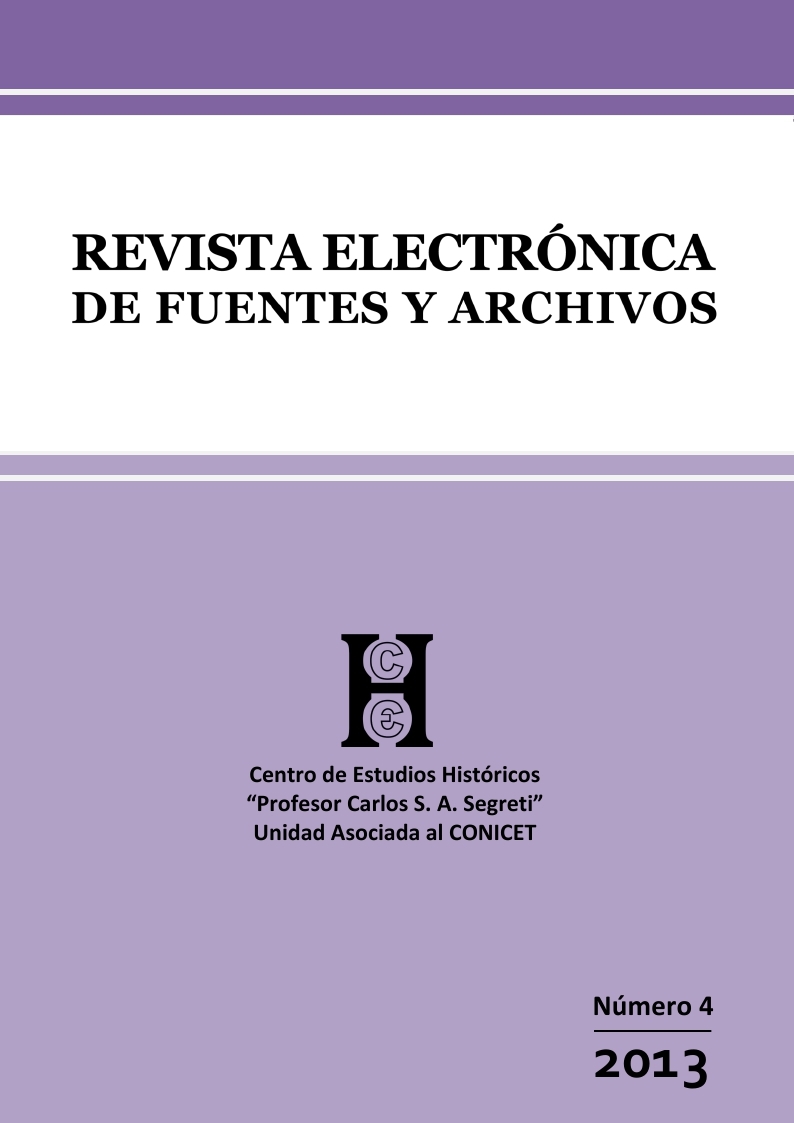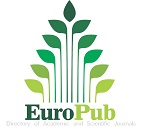Manuel Basavilbaso and the anteater. On the formation of natural history collections
Keywords:
natural history, colonial bureaucracy, animalsAbstract
This work aims to illustrate the formation of a natural history collection. It focuses, especially, the anteater which was sent by Manuel Basavilbaso, who was the head of the “real renta de correo” of Buenos Aires, with destination to the court at Madrid. The anteater’s history allows to show, on one hand, the multiple agents, territories and institutions involved in the collection and remission of natural objects from the colonies, and on the other hand, the articulation of academic and bureaucratic mechanisms.
Downloads
References
ABBRI Ferdinando, “Prefazione”, Valentina VACCARI, Joseph Priestley e la Lunar Society. I laboratori e la pratica sperimentale, Milano, Franco Angeli, 2008.
ACHIM Miruna, Lagartijas Medicinales. Remedios Americanos y Debates Científicos en la Ilustración, México, Conaculta, 2008.
ALZATE José Antonio, Observaciones útiles para el futuro de México. Selección de Artículos, 1768-1795, Miruna ACHIM (ed.), México, Conaculta, 2012, p. 242-245.
BARATAY Eric y Elizabeth HARDOUIN-FOUGIER (ed.), Zoo: A history of Zoological Gardens in the West, London, Reaktion Books, 2002.
BARATAY Eric, “Un instrument symbolique de la domesticación: Le jardin zoologique aux XIXe-Xxe siècles (L’exemple du parc de la Tête D’Or à Lyon)”, Cahiers D’Histoires, núm. 3-4, 1997, pp. 677-706.
BARREIRO Agustín, El Museo nacional de Ciencias Naturales (1771-1935), Madrid, Doce Calles, 1992.
BARRERA Antonio, Experiencing Nature: The Spanish American Empire and the Early Scientific Revolution, Austin, University of Texas Press, 2006.
BISIO DE ORLANDO Raquel, “La renta de correos de Buenos Aires hasta 1810”, Memoria del Congreso del Instituto de Derecho Indiano, México, Escuela Libre de Derecho, UNAM, pp. 169-185.
BRENDECKE Arndt, Imperio e información. Funciones del saber en el dominio colonial español, Madrid, Frankfurt, Iberoamericana Vervuert, 2012.
BRÚ Juan Bautista, Colección de láminas que representan los animales y monstruos del Real Gabinete de Historia Natural de Madrid, con una descripción individual de cada uno, tomo II, Madrid, Imprenta de Andrés de Sotos, 1786.
BURKHARDT Richard, “Animali vivi per la Ménagerie di Parigi. Istruzioni del Museum d’Histoire Naturelle”, Maurizio BOSSI y Claudio GREPPI, Viaggi e scienza. Le istruzione scientifiche per i viaggiatori nei secoli XVI-XIX, Firenze, Leo Olschki, 2005.
CALATAYUD María Ángeles, “Antecedentes y creación del Real Gabinete de Historia natural de Madrid”, Arbor, núm. 482, 1986, pp. 9-33.
CALATAYUD María Ángeles, Pedro Franco Dávila y el Real Gabinete de Historia Natural, Madrid, CSIC, 1988.
COLLINI Silvia y Antonella VANNONI, Les instructions scientifiques pour les voyageurs (XVIIe-XIXe siècle), Paris, L’Harmattan, 2005.
CONCOLORCORVO, El lazarillo de ciegos caminantes, Buenos Aires, Emecé, 1997.
DE ASÚA Miguel y Roger FRENCH, A New World of Animals. Early Europeans on the Creatures of Iberian America, Aldershot, Ashgate, 2005, pp. 66-118.
DE URRÍES Y DE LA COLINA Javier Jordán, “Un Goya exótico: La osa hormiguera de su majestad”, Revista de Arte Goya, núm. 336, 2011, pp. 242-253.
DILLON John Talbot, Travels through Spain, with a view to illustrate the natural history and physical geography of that kingdom a series of letters, Dublin, Printed for S. Price, W. and H. Whitestone, T. Walker, W. Gilbert, C. Jenkin, W. Hallhead, L. White, C. Talbot and P. Byrne, 1781.
DOBRIZHOFFER Martin, An Account of the Abipones, an equestrian people of Paraguay, volume I, London, John Murray, Albemarle Street, 1822, pp. 268-270.
FIGUEROA Marcelo Fabián, “Cuestionarios, instrucciones y circulación de objetos naturales entre España y América (siglos XVI y XVIII)”, Anuario del Centro de Estudios Históricos “Prof. Carlos S. A. Segreti”, año 12, núm. 12, 2012, pp. 121-136.
FIGUEROA Marcelo Fabián, “Packing techniques and political obedience as scientific issues”, Journal of History of Science and Technology, vol. 5, 2012, pp. 49-67.
FUSTER María Teresa, “La Hermandad de la Santa Caridad. Los orígenes de la beneficencia en la ciudad de Buenos Aires”, Bibliographica Americana, núm. 8, 2012.
GÓMEZ-CENTURIÓN JIMÉNEZ Carlos, “Curiosidades vivas. Los animales de América y Filipinas en la Ménagerie real durante el siglo XVIII”, Anuario de Estudios Americanos, vol. 66, núm. 2, 2009.
GÓMEZ-CENTURIÓN JIMÉNEZ Carlos, Alhajas para soberanos. Los animales reales en el siglo XVIII: de las leoneras a las mascotas de cámara, Valladolid, Junta de Castilla y León, 2011.
HARRIS Steven, “Introduction: Thinking locally, acting globally”, Configurations, vol. 6, núm 2, 1998.
HOAGE R. J. y William A. DEISS (eds.), New worlds new animals. From the menagerie to zoological park in the nineteenth century, Baltimore, The Johns Hopkins University Press, 1996.
JARDINE Nicholas y Emma SPARY, “The natures of cultural history”, N. JARDINE, J. A. SECORD y E. C. SPARY (eds.), Cultures of natural History, Cambridge, UK, The Cambridge University Press, 1996, pp. 7-11.
JUMAR Fernando, “Comerciantes en Río de la Plata pre-virreinal. El caso de Domingo de Basavilbaso”, Anuario del Instituto de Historia Argentina, Facultad de Humanidades y Ciencias de la Educación, Universidad Nacional de La Plata, núm.11, 2011.
LEMOINE VILLICAÑA Ernesto, Boletín del Archivo General de la Nación, núm. 2, 1961, pp. 191-223.
LIVINGSTONE David, Putting Science in its place: geographies of scientific knowledge, Chicago, The Chicago University Press, 2003.
MAZO PÉREZ Ana Victoria, “El Oso Hormiguero de su Majestad”, Asclepio, vol. LVIII, núm. 1, pp. 281-294.
MIEG Juan, Paseo por el Gabinete de Historia Natural de Madrid, o descripción sucinta de los principales objetos de Zoología que ofrecen las salas de esta interesante colección, Madrid, Imprenta de D. M. de Burgos, 1818.
MILLIN A. L., P. PINEL y A. BROGNIART, Rapport fait à la Société d’Histoire Naturelle de Paris, sur la nécessité d'établir une ménagerie, Paris, Boileau, 1794.
OPHIR Adi and Steven SHAPIN, “The place of knowledge: a methodological survey”, Science in Context, vol. IV, 1991, pp. 3-21.
PEIRE Jaime y Roberto DI STEFANO, “De la sociedad barroca a la ilustrada: aspectos económicos del proceso de secularización en el Río de la Plata”, Andes, Antropología e Historia, núm. 15, 2004.
PÉREZ DE TUDELA Almudena y Annemarie JORDAN GSCHWEND, “Rennaisance ménageries. Exotic animals and pets at the Habsburg Courts in Iberia and the Central Europe”, Karl A. E. ENENKEL y Paul J. SMITH (eds.), Early modern zoology. The construction of animals in science, literature and the visual arts, Lediden, Brill, 2007.
PIMENTEL Juan, “Across Nations and Ages: The Creole Collector and the Many Lives of the Megatherium”, Simon SCHAFFER, Lissa ROBERTS, Kapil RAJ, James DELBOURGO (eds.), The brokered world. Go-Betweens and Global Intelligence, 1770-1820, Sagamore Beach, USA, Science History Publications, 2009.
PIMENTEL Juan, “The Iberian Vision: Science and Empire in the Framework of a Universal Monarchy, 1500-1800”, Osiris, vol. 15, 2000, pp. 17-31.
REGOURD Francois, “Diffusion et assimilation des techniques academiques de collecte et d’expertise dans l’espace caraïbe francais (XVIIe-XVIIIe s.)”, Phillipe HRODEJ y Sylviane LLINARES (dir.), Techniques et colonies (XVIe-XVIIIe siècles), Paris, Publication de la Société Française d'Histoire d’Outre-Mer, 2005.
ROBBINS Louise, Elephants Slaves & Pampered Parrots. Exotic animals in Eighteenth-Century Paris, Baltimore, The Johns Hopkins University Press, 2002.
SHAPIN Steven, “The house of experiment in seventeenth-century England”, Isis, vol. 79, núm. 3, 1988, pp. 373-404.
SHAPIN Steven, The Scientific Revolution, Chicago, The University of Chicago Press, 1996.
SIEGRIST Nora, “La hidalguía en Buenos Aires en el siglo XVIII. Conceptos sobre sus alcances en los actos positivos”, Procesos Históricos. Revista Semestral de Historia, Arte y Ciencias Sociales, núm. 9, 2006.
SOLANO Francisco de, Cuestionarios para la formación de las relaciones geográficas de Indias, siglos XVI-XIX, Madrid, CSIC, 1988.
UDAONDO Enrique, Diccionario Biográfico Colonial Argentino, Buenos Aires, Huarpes, 1945.
URQUIJO José María Mariluz, “Clima intelectual rioplatense de mediados del setecientos. Los límites del Poder Real”, De la Justicia del Tratado de Límites de 1750 por Baltazar Maziel, Buenos Aires, Academia Nacional de la Historia, 1988.
VALMONT DE BOMARE M., Dictionnaire Raisonné Universel d’Histoire Naturelle, tome V, Lyon, Chez Bruyset Freres, 1791, pp. 597-605.
VILLENA M., J.S. ALMAZÁN, J. MUÑOZ y F. YAGÜE, El gabinete perdido. Pedro Franco Dávila y la Historia natural del Siglo de las Luces, Madrid, CSIC, 2009.
WITHERS Charles W.J., “Where was the Atlantic Enlightenment?-Questions of Geography”, Susan MANNING y Francis D. COGLIANO (eds.), The Atlantic Enlightenment, Aldershot, Ashgate, 2008.
Downloads
Published
Issue
Section
License
Copyright (c) 2013 Marcelo Fabián Figueroa

This work is licensed under a Creative Commons Attribution-NonCommercial-ShareAlike 4.0 International License.
Se puede compartir (copiar y redistribuir el material en cualquier medio o formato) y adaptar (remezclar, transformar y construir a partir del material), siempre que: a) se cite la autoría y la fuente original de su publicación (revista, editorial y URL de la obra); b) no se use con fines comerciales; c) la distribución de las obras derivadas se haga con una licencia igual a la que regula la obra original.




















